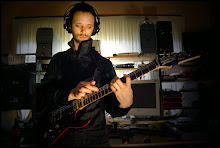Audio Arts - Week 8/9 – Live Sound and Acoustics
(1) What do you think the purpose of live recording is?
Live recording at its purist is capturing a genuine moment in time. It is the art of preserving a performance in the clearest format that the environment, equipment and circumstances will allow.
The biggest advantage that live recording should offer is an abundance of performance energy. Whatever the performance type, this should be the group in their element, the moment in time they all work and long for. Public performance always introduces elements of adrenaline, fear and excitement that, in the hands of seasoned professionals, should be focused for an energetic and organic experience. It is difficult to reach the same level of hyperactivity in a sterile recording studio environment, and live recordings, while not always offering note perfect performance, should offer listeners a piece of the group as raw musicians, putting themselves out there without fear of exposing their flaws.
Disadvantages are numerous. There can be little or no control over the reflective properties of the space, so microphone placement must be optimised for the space as it is. All micing techniques are affected by this so any or all can produce lesser quality than could be expected from a studio recording space.
There is generally nowhere dedicated for monitoring to take place, so the closest available room of suitable size (or less) must be settled upon.
Room microphones must take into account the audience noise. The optimum placement for room ambience for the mics may expose them to isolated noise from a small pocket of the audience, therefore making the crowd sound smaller overall.
The big one of course is that the band can only do one take of each song. If it’s really bad, there’s no second chance.
(2) Where do you think the future of studio and venue acoustics lies?
For lower end and home recording studios, the new plug-ins and small hardware devices offering dedicated room correction equalisation seem to offer the only ‘solution’ to the perils of mixing and monitoring in an acoustically inferior space. As the price of labour escalates, and the availability of personnel decreases, treatment of rooms that requires a tradesman’s assistance is a very expensive option – before an acoustic engineer is even considered. Given that software and hardware in this field is only going to improve, perhaps a medium between relatively cheap acoustic baffling and software/hardware correction should be the goal for those with tight budgets. Removing some of a room’s reflective issues with baffles could reduce the margin for error in correction devices, thus yielding a more accurate result overall.
All of us who study at EMU know the cost incurred by the treatment of the recording space. It quickly chewed through what seemed to be a considerable budget as the acoustic engineer’s fees ended up compromising the overall result, which was left unfinished. To look at EMU as a test case for exploring the merits of software like the Advanced Room Correction (ARC) from IK Multimedia, or the KRK Ergo System is a useful exercise in economics. Given some of the software/hardware purchased by EMU over the last year, either of these options as an experiment would be a relatively small investment. Treating the
Studio one and Studio two control rooms would be unrealistically expensive by comparison. Even if the ‘virtual’ solutions are not up to scratch, small projects for treating the rooms physically may be embarked upon with the knowledge of their necessity. Personally, I think a correction device plus a large number of decent acoustic baffles of varying sizes would be the best option for EMU at this stage. Varying baffles would allow for a degree of experimentation in the control rooms to find a balance between correction and treatment.
Ultimately it seems that physical treatment of the expensive kind is just one more area of sound engineering being absorbed into the virtual world.
References:
Grice, David. “Audio Arts - Week 8/9 – Live Sound and Acoustics.” Lecture presented at Immanuel College Concert Room and Recording Studio, Novar Gardens, SA, 16th of May 2008.
"KRK Systems Releases Ergo, Powerful Room Audio Correction System". 2008.
Multimedia, IK. "Advanced Room Correction System - Chapter 1 - Arc Overview". 2008.
Stavrou, Michael Paul. "Stav's Word: Recording a Live Gig." Audio Technology.45: 64 - 66.



0 Comments:
Post a Comment
<< Home